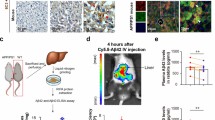Abstract
The generation of reactive oxygen species causes cellular oxidative damage, and has been implicated in the etiology of Alzheimer’s disease (AD). L-NNNBP, a new chiral pyrrolyl α-nitronyl nitroxide radical synthesized in our department, shows potential antioxidant effects. The purpose of this study was to investigate the protective effects of L-NNNBP on β-amyloid (Aβ) deposition and memory deficits in an AD model of APP/PS1 mice. In cultured cortical neurons, L-NNNBP acted as an antioxidant by quenching reactive oxygen species, inhibiting lipid peroxidation, nitrosative stress, and stimulating cellular antioxidant defenses. L-NNNBP inhibited cell apoptosis induced by Aβ exposure. In vivo treatment with L-NNNBP for 1 month induced a marked decrease in brain Aβ deposition and tau phosphorylation in the blinded study on APP/PS1 transgenic mice (1 mM in drinking water, initiated when the mice were 6 months old). The L-NNNBP-treated APP/PS1 mice showed decreased astrocyte activation and improved spatial learning and memory compared with the vehicle-treated APP/PS1 mice. These actions were more potent compared with that of curcumin, a natural product, and TEMPO, a nitroxide radical, which are used as free radical scavengers in clinics. These results proved that the newly synthesized L-NNNBP was an effective therapeutic agent for the prevention and treatment of AD.











Similar content being viewed by others
References
Pratico D, Uryu K, Leight S, Trojanoswki JQ, Lee VM. Increased lipid peroxidation precedes amyloid plaque formation in an animal model of Alzheimer amyloidosis. J Neurosci 2001;21:4183-4187.
LaFerla FM, Green KN, Oddo S. Intracellular amyloid-beta in Alzheimer’s disease. Nat Rev Neurosci 2007;8:499-509.
Reddy PH, Beal MF. Amyloid beta, mitochondrial dysfunction and synaptic damage: implications for cognitive decline in aging and Alzheimer’s disease. Trends Mol Med 2008;14:45-53.
Nunomura A, Castellani RJ, Zhu X, Moreira PI, Perry G, Smith MA. Involvement of oxidative stress in Alzheimer disease. J Neuropathol Exp Neurol 2006;65:631-41.
Nunomura A, Perry G, Aliev G, et al. Oxidative damage is the earliest event in Alzheimer disease. J Neuropathol Exp Neurol 2001;60:759-767.
Lin MT, Beal MF. Mitochondrial dysfunction and oxidative stress in neurodegenerative diseases. Nature 2006;443:787-795.
Kim J, Lee HJ, Lee KW. Naturally occurring phytochemicals for the prevention of Alzheimer’s disease. J Neurochem 2010;112:1415-1430.
Tauskela JS. MitoQ—a mitochondria-targeted antioxidant. IDrugs 2007;10:399-412.
Lim GP, Chu T, Yang F, Beech W, Frautschy SA, Cole GM. The curry spice curcumin reduces oxidative damage and amyloid pathology in an Alzheimer transgenic mouse. J Neurosci 2001;21:8370-8377.
Baum L, Lam CW, Cheung SK, et al. Six-month randomized, placebo-controlled, double-blind, pilot clinical trial of curcumin in patients with Alzheimer disease. J Clin Psychopharmacol 2008;28:110-113.
Snow BJ, Rolfe FL, Lockhart MM, et al. A double-blind, placebo-controlled study to assess the mitochondria-targeted antioxidant MitoQ as a disease-modifying therapy in Parkinson’s disease. Mov Disord 2010;25:1670-1674.
Griller D, Ingold KU. Persistent carbon-centered radicals. Acc Chem Res 1976;9:13-19.
Hahn SM, Krishna MC, DeLuca AM, Coffin D, Mitchell JB. Evaluation of the hydroxylamine Tempol-H as an in vivo radioprotector. Free Radic Biol Med 2000;28:953-958.
Gelvan D, Saltman P, Powell SR. Cardiac reperfusion damage prevented by a nitroxide free radical. Proc Natl Acad Sci U S A 1991;88:4680-4684.
Dikalov SI, Vitek MP, Maples KR, Mason RP. Amyloid beta peptides do not form peptide-derived free radicals spontaneously, but can enhance metal-catalyzed oxidation of hydroxylamines to nitroxides. J Biol Chem 1999;274:9392-9399.
Liang Q, Smith AD, Pan S, et al. Neuroprotective effects of TEMPOL in central and peripheral nervous system models of Parkinson’s disease. Biochem Pharmacol 2005;70:1371-1381.
Kouvaris JR, Kouloulias VE, Vlahos LJ. Amifostine: the first selective-target and broad-spectrum radioprotector. Oncologist 2007;12:738-747.
Metz JM, Smith D, Mick R, et al. A phase I study of topical Tempol for the prevention of alopecia induced by whole brain radiotherapy. Clin Cancer Res 2004;10:6411-6417.
Hirel C, Pécaut J, Choua S, et al. Enantiopure and racemic chiral nitronyl nitroxide free radicals: synthesis and characterization. Eur J Org Chem 2005;2005:348-359.
Trinchese F, Liu S, Battaglia F, Walter S, Mathews PM, Arancio O. Progressive age-related development of Alzheimer-like pathology in APP/PS1 mice. Ann Neurol 2004;55:801-814.
Galle J, Bengen J, Schollmeyer P, Wanner C. Impairment of endothelium-dependent dilation in rabbit renal arteries by oxidized lipoprotein(a). Role of oxygen-derived radicals. Circulation 1995;92:1582-1589.
Satav JG, Katyare SS. Effect of experimental thyrotoxicosis on oxidative phosphorylation in rat liver, kidney and brain mitochondria. Mol Cell Endocrinol 1982;28:173-189.
Xi M, Hai C, Tang H, Chen M, Fang K, Liang X. Antioxidant and antiglycation properties of total saponins extracted from traditional Chinese medicine used to treat diabetes mellitus. Phytother Res 2008;22:228-237.
Musiek ES, Morrow JD. F(2)-isoprostanes as markers of oxidant stress: an overview. Curr Protoc Toxicol 2005;Chapter 17:Unit17.5.
Shanu A, Groebler L, Kim HB, et al. Selenium inhibits renal oxidation and inflammation but not acute kidney injury in an animal model of rhabdomyolysis. Antioxid Redox Signal 2012 Oct 16 [Epub ahead of print].
Liu SB, Zhang N, Guo YY, et al. G-protein-coupled receptor 30 mediates rapid neuroprotective effects of estrogen via depression of NR2B-containing NMDA receptors. J Neurosci 2012;32:4887-4900.
Brewer GJ, Torricelli JR, Evege EK, Price PJ. Optimized survival of hippocampal neurons in B27-supplemented Neurobasal, a new serum-free medium combination. J Neurosci Res 1993;35:567-576.
Morita Y, Naka T, Kawazoe Y, et al. Signals transducers and activators of transcription (STAT)-induced STAT inhibitor-1 (SSI-1)/suppressor of cytokine signaling-1 (SOCS-1) suppresses tumor necrosis factor alpha-induced cell death in fibroblasts. Proc Natl Acad Sci U S A 2000;97:5405-5410.
Jankowsky JL, Fadale DJ, Anderson J, et al. Mutant presenilins specifically elevate the levels of the 42 residue beta-amyloid peptide in vivo: evidence for augmentation of a 42-specific gamma secretase. Hum Mol Genet 2004;13:159-170.
Blanchard V, Moussaoui S, Czech C, et al. Time sequence of maturation of dystrophic neurites associated with Abeta deposits in APP/PS1 transgenic mice. Exp Neurol 2003;184:247-263.
Bayir H, Kagan VE, Borisenko GG, et al. Enhanced oxidative stress in iNOS-deficient mice after traumatic brain injury: support for a neuroprotective role of iNOS. J Cereb Blood Flow Metab 2005;25:673-684.
McManus MJ, Murphy MP, Franklin JL. The mitochondria-targeted antioxidant MitoQ prevents loss of spatial memory retention and early neuropathology in a transgenic mouse model of Alzheimer’s disease. J Neurosci 2011;31:15703-15715.
Stennicke HR, Jurgensmeier JM, Shin H, et al. Pro-caspase-3 is a major physiologic target of caspase-8. J Biol Chem 1998;273:27084-27090.
Kirsch DG, Doseff A, Chau BN, et al. Caspase-3-dependent cleavage of Bcl-2 promotes release of cytochrome c. J Biol Chem 1999;274:21155-21161.
Lustbader JW, Cirilli M, Lin C, et al. ABAD directly links Abeta to mitochondrial toxicity in Alzheimer’s disease. Science 2004;304:448-452.
Nicolakakis N, Aboulkassim T, Ongali B, et al. Complete rescue of cerebrovascular function in aged Alzheimer’s disease transgenic mice by antioxidants and pioglitazone, a peroxisome proliferator-activated receptor gamma agonist. J Neurosci 2008;28:9287-9296.
Kurt MA, Davies DC, Kidd M, Duff K, Howlett DR. Hyperphosphorylated tau and paired helical filament-like structures in the brains of mice carrying mutant amyloid precursor protein and mutant presenilin-1 transgenes. Neurobiol Dis 2003;14:89-97.
Itagaki S, McGeer PL, Akiyama H, Zhu S, Selkoe D. Relationship of microglia and astrocytes to amyloid deposits of Alzheimer disease. J Neuroimmunol 1989;24:173-182.
Matsuoka Y, Picciano M, Malester B, et al. Inflammatory responses to amyloidosis in a transgenic mouse model of Alzheimer’s disease. Am J Pathol 2001;158:1345-1354.
Perry VH, Nicoll JA, Holmes C. Microglia in neurodegenerative disease. Nat Rev Neurol 2010;6:193-201.
Smith MA, Zhu X, Tabaton M, et al. Increased iron and free radical generation in preclinical Alzheimer disease and mild cognitive impairment. J Alzheimers Dis 2010;19:363-372.
Likhtenshtein GI, Yamauchi J, Nakatsuji Si, Smirnov AI, Tamura R. Organic functional materials containing chiral nitroxide radical units. Nitroxides. Wiley-VCH Verlag GmbH & Co, Berlin, 2008.
Aruoma O. Free radicals, oxidative stress, and antioxidants in human health and disease. J Am Oil Chem Soc 1998;75:199-212.
Selkoe DJ. Alzheimer’s disease: genes, proteins, and therapy. Physiol Rev 2001;81:741-766.
Drake J, Link CD, Butterfield DA. Oxidative stress precedes fibrillar deposition of Alzheimer’s disease amyloid beta-peptide (1-42) in a transgenic Caenorhabditis elegans model. Neurobiol Aging 2003;24:415-420.
Selkoe DJ. Alzheimer disease: mechanistic understanding predicts novel therapies. Ann Intern Med 2004;140:627-638.
Hardy J, Selkoe DJ. The amyloid hypothesis of Alzheimer’s disease: progress and problems on the road to therapeutics. Science 2002;297:353-356.
Selkoe DJ. Alzheimer’s disease is a synaptic failure. Science 2002;298:789-791.
Mohmmad Abdul H, Wenk GL, Gramling M, Hauss-Wegrzyniak B, Butterfield DA. APP and PS-1 mutations induce brain oxidative stress independent of dietary cholesterol: implications for Alzheimer’s disease. Neurosci Lett 2004;368:148-150.
Garwood CJ, Pooler AM, Atherton J, Hanger DP, Noble W. Astrocytes are important mediators of Abeta-induced neurotoxicity and tau phosphorylation in primary culture. Cell Death Dis 2011;2:e167.
Zhu X, Su B, Wang X, Smith MA, Perry G. Causes of oxidative stress in Alzheimer disease. Cell Mol Life Sci 2007;64:2202-2210.
Butterfield DA, Boyd-Kimball D. The critical role of methionine 35 in Alzheimer’s amyloid beta-peptide (1-42)-induced oxidative stress and neurotoxicity. Biochim Biophys Acta 2005;1703:149-156.
Miller BL, Williams TD, Schöneich C. Mechanism of sulfoxide formation through reaction of sulfur radical cation complexes with superoxide or hydroxide ion in oxygenated aqueous solution. J Am Chem Soc 1996;118:11014-11025.
Kanski J, Aksenova M, Butterfield DA. The hydrophobic environment of Met35 of Alzheimer’s Abeta(1-42) is important for the neurotoxic and oxidative properties of the peptide. Neurotox Res 2002;4:219-223.
Yao J, Irwin RW, Zhao L, Nilsen J, Hamilton RT, Brinton RD. Mitochondrial bioenergetic deficit precedes Alzheimer’s pathology in female mouse model of Alzheimer’s disease. Proc Natl Acad Sci U S A 2009;106:14670-14675.
Acknowledgments
This research was supported by National Natural Science Foundation of China, No. 31070923, 31271144, 2011ZXJ09106-01C, 2012BAK25B00, and 2011KTCL03-12. The authors state that no competing financial or other conflicts of interests exist.
Required Author Forms
Disclosure forms provided by the authors are available with the online version of this article
Author information
Authors and Affiliations
Corresponding author
Additional information
Tian-yao Shi, Da-qing Zhao, Hai-bo Wang and Shufang Feng contributed equally to this work.
Electronic supplementary material
Below is the link to the electronic supplementary material.
ESM 1
(PDF 498 kb)
Rights and permissions
About this article
Cite this article
Shi, Ty., Zhao, Dq., Wang, Hb. et al. A New Chiral Pyrrolyl α-Nitronyl Nitroxide Radical Attenuates β-Amyloid Deposition and Rescues Memory Deficits in a Mouse Model of Alzheimer Disease. Neurotherapeutics 10, 340–353 (2013). https://doi.org/10.1007/s13311-012-0168-z
Published:
Issue Date:
DOI: https://doi.org/10.1007/s13311-012-0168-z




